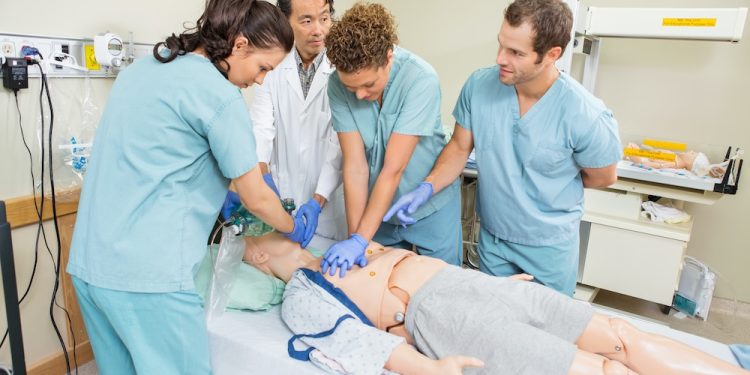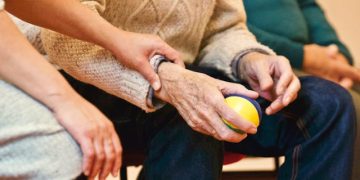In a highly regulated industry such as healthcare, organisations must meet stringent requirements for practising and perfecting lifesaving procedures. Some are simple and straightforward, while others are more complicated and require greater understanding and expertise.

Regardless of the procedure or area of expertise, all health professionals need to have the skills and knowledge required to perform their roles to the best of their abilities. This is where medical simulation comes in with the ability to provide life-like, hands-on training that can be tailored to the specific needs of each individual.
Why Is Medical Simulation Important?
In most cases, the best way to learn is by doing. This is especially true for procedures that need to be performed quickly and under pressure, such as emergency situations or surgeries. The more times a person performs a procedure, the better they will be at it.
The truth is, medical trainees don't really have the means to put their skills into practice on real patients – except for a few lucky ones who might get to observe experienced surgeons in the operating room. But even so, observation is just the first step toward becoming competent in a particular medical setting.
For this reason, medical simulation kits are often used in training. These provide a true-to-life experience that allows students to get a feel for performing various procedures. And seeing as they're not working on real patients, there's no risk of making a mistake that could cause harm.
How Can Simulations Be Used in Medical Training?
Depending on the procedure being taught, different types of simulations can be used. Each one has specific features and benefits that make it well-suited for particular types of training.
Casualty Simulation Kits
These usually come with an accurate representation of a puncture wound or laceration, with all the corresponding bones and blood vessels in a particular area. Seeing as these kinds of injuries are relatively common, it's important for medical trainees to understand the realistic casualty simulation kits and how to deal with them.

There are several different bleeding patterns and colours that can be simulated with these kits, from surface-level cuts to more serious, life-threatening injuries. Since each one requires a different course of treatment, knowing how to treat each type of wound is essential for any medical professional.
Apart from the area of the injury itself, each casualty simulation kit has all the relevant tools and equipment needed to treat the wound. This includes bandages, tourniquets, and pressure dressings. Students can follow a step-by-step guide to learn how to use each item and apply it correctly.
Once the wound has been treated, the kit can be reused to simulate different injuries or employed for other training purposes. For instance, the blood spatters can be placed on another body part or completely cleaned off to start from scratch.
Aside from open wound treatment, burn injuries are also accurately represented in casualty simulation kits. Their brownish-red tint and raised, blistered appearance are realistically replicated, which can be used as an essential visual aid in any emergency medical training.
In any case, getting complete kits instead of individual items is always recommended. This way, students have everything they need in one place and can focus on their training without the hassle of scouring the necessary supplies.
Birthing Simulators
One of the most delicate and complicated procedures that medical trainees can learn is childbirth. It affects not just the mother but also the child, so any mistakes made during the delivery can have serious consequences.
Given the high stakes, plenty of care and precision is needed to get the procedure right. And while there's no substitute for working with a real patient, accurate birthing simulators come really close to the real deal.
You can either get the full manikin or just the pelvic trainer, depending on your needs. The former is more expensive but offers a more comprehensive training experience, while the latter is less costly and can be used for a more guided, specific lesson.
The genital area of birthing simulators offers an accurate and complete representation of a woman's anatomy, from the vulva and vagina to the perineum. The foetus can also be realistically positioned inside the womb, which can be used to simulate different scenarios.
For instance, students can learn how to deal with a breech delivery, in which the baby's buttocks or feet come out first instead of the head. Another common scenario that can be simulated is twins, where both babies are delivered at the same time.
When it comes to C-section training, a ready-made incision can be found in the lower abdomen of the manikin. The upper layer of skin and underlying tissues can be cut open to reveal the womb, where the baby is located.
After the delivery, students can then proceed to learn how to tie and cut the umbilical cord. The placenta can also be removed from the uterus and examined, which is a critical step in ensuring that everything went smoothly and as planned.
Basic Life Support
When patients are unable to breathe on their own, it's up to medical professionals to provide them with the life-saving support that they need. This includes performing CPR, using a defibrillator, and administering oxygen.

Basic life support training covers all of these topics and more, giving students the skills and knowledge they need to save a patient's life in an emergency situation. Each exercise results in immediate feedback, so students can quickly identify and correct any mistakes.
For example, the CPR manikin usually comes with an airway that can be inserted into the mouth, which allows students to practice giving rescue breaths. As they do so, a sensor inside the manikin will detect whether they're providing the right amount of air and inflation.
The same goes for chest compressions, where students are expected to apply the correct amount of pressure in order to keep the patient's blood circulating. If the compressions are too shallow, the manikin will give off a ‘clicking' sound to indicate that more force is needed.
Injections and Tubing
One of the most commonly performed medical procedures is injections, which are used to deliver medication directly into a patient's bloodstream. While this might seem like a simple task, it actually requires a lot of skill and practice to get it right.
That's because the needle has to be inserted into the right spot, at the right angle, and with the right amount of force. If any of these factors are off, it could lead to pain, swelling, bruising, or even infection.
Injection training arms or legs are designed to simulate human skin and tissue, complete with veins, muscles, and bones. This allows students to practice finding the right spot to insert the needle, as well as how to change the angle of the needle depending on the injection site.
Some models also come with different types of tubing, which can be used to practice inserting catheters or feeding tubes. Both of these procedures are quite delicate and require a steady hand, which is why practice is critical.

























